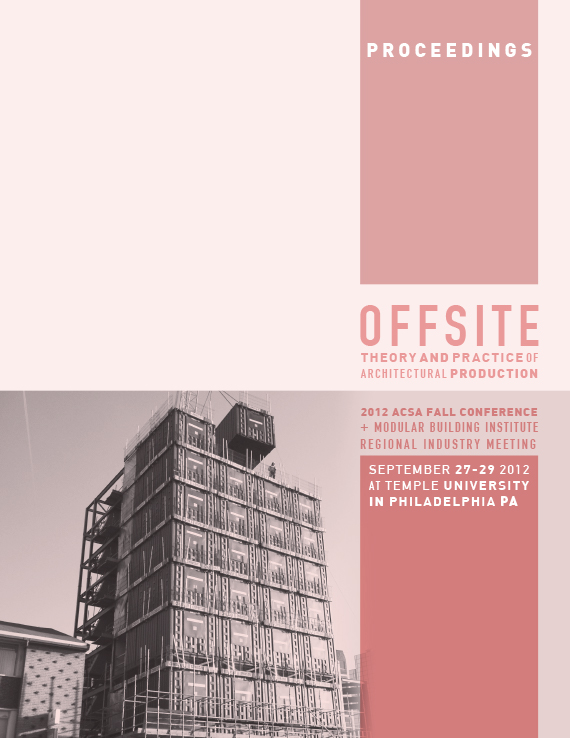Author(s): Elizabeth Martin
The fast-paced evolution of fabrication and construction methods of buildingenclosure systems and assemblies is quickly becoming a major issue intoday’s architectural and educational practices. Researchers and the constructionindustry are now providing material assemblies that are making enclosuresof just 20-years ago obsolete. In the next decade, wholesale building skinreplacement systems will be adaptable to seasonal or daily climatic changes.The abstract proposes addressing three questions:1.) define moderate and extreme ecologies responses via mapping2.) describe the range of kinetic pattern and movements3.) develop and build upon nomenclature to accurately describe themorphology of the kinetics through a series of case-studies both realized(built) and exploratory (research).The design of an architectural enclosure system is bound, in no small part, tosituating oneself in context of our contemporary social and ‘cultural’ conditions,as well as attendant aesthetic discourse. We cannot help but be ‘here’and ‘now’, observing its intricacies from the midst of our subjectivity; but alsoreflect on our contemporary condition in the context of a number of pertinentevents: ecological changes (weather patterns) + technological advancements(kinetic patterns).One of the central research themes in ecology is evaluating the extent to whichbiological richness is necessary to sustain the Earth’s system and functioningof individual ecosystems. My aim is to illustrate an alternative perspective exploringhow building enclosure elements can be combined to create costandenergyeffective, yet adaptable building enclosures in both extreme and moderateclimates.
Volume Editors
John Quale, Rashida Ng & Ryan E. Smith
ISBN
978-0-935502-85-5

 Study Architecture
Study Architecture  ProPEL
ProPEL 
